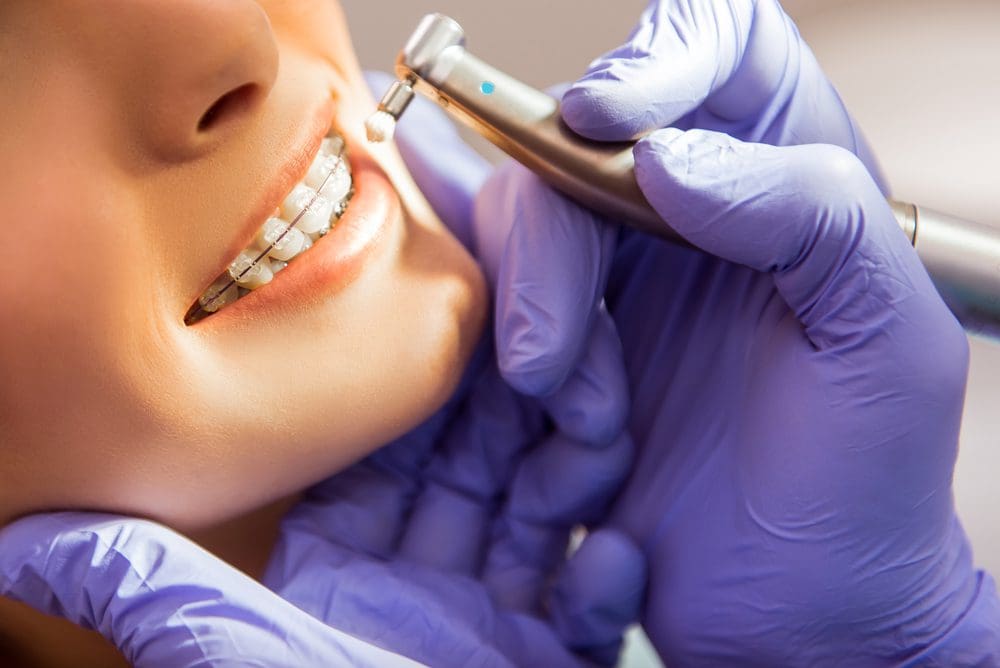The Benefits of Choosing a Cumming Orthodontist for Your Braces and Aligners
Comprehensive Overview to Orthodontics Treatments for Remedying Oral Imbalances
Recognizing the details of each treatment, including their systems, benefits, and prospective disadvantages, is important in making informed choices concerning one's orthodontic treatment. As we browse via the thorough guide to orthodontic procedures for correcting oral misalignments, the elaborate information of each method will unravel, shedding light on the course toward a practical and harmonious oral alignment.
Orthodontic Procedures Review

Along with clear aligners and traditional braces, orthodontists may also advise various other treatments like headwear, palatal expanders, or retainers to attend to particular placement issues (braces). These treatments are customized per patient's distinct requirements and may involve a mix of treatments to achieve the preferred results. Normal modifications and surveillance are essential components of orthodontic treatment to guarantee development gets on track and to make any kind of necessary alterations along the method. By undergoing orthodontic procedures, individuals can not just attain a straighter smile but likewise enhance their total dental health and feature.
Typical Braces: How They Work
When considering orthodontic therapies for oral imbalances, conventional dental braces stick out as a tried and true approach for correcting teeth positioning. Standard dental braces include braces, wires, and bands that interact to apply constant stress on the teeth, progressively relocating them into the desired positioning. The brackets are affixed to the teeth making use of a special adhesive, and the cords are threaded through the brackets. By readjusting the tension of the cords, orthodontists can control the direction and force used to each tooth, leading them right into correct alignment in time.
As pressure is applied to the teeth via the braces, the bone bordering the teeth is improved to sustain the new tooth settings. Individuals will require regular adjustments at the orthodontist's office to make certain the dental braces continue to apply the appropriate stress for effective teeth movement.
Unnoticeable Aligners: Pros and Disadvantages
These clear, personalized trays are virtually undetectable when put on, making them an appealing alternative for individuals looking for a much more visually pleasing orthodontic treatment. People can remove the aligners before eating or brushing their teeth, minimizing the danger of food obtaining stuck in the appliance and streamlining the cleansing procedure.

Surgical Orthodontic Options
Surgical interventions in orthodontics existing sensible options for addressing intricate oral imbalances that might not be effectively settled via conventional orthodontic therapies. While conventional dental braces and unseen aligners can fix several orthodontic issues, certain situations call periodontal treatment for medical treatment to accomplish optimum results. Surgical orthodontic alternatives are normally recommended for serious malocclusions, significant jaw discrepancies, and situations where the underlying bone framework needs alteration to achieve correct alignment.
One usual medical orthodontic treatment is orthognathic surgical procedure, which involves repositioning the jaws to correct practical issues such as problem chewing or talking. This surgical treatment is usually performed in collaboration with an orthodontist who assists straighten the teeth prior to and after the treatment. Surgical orthodontics may additionally include procedures to subject influenced teeth, eliminate excess periodontal tissue, or improve the jawbone to develop a much more unified face account.
Before thinking about medical orthodontic options, individuals go through a thorough evaluation to establish the need and prospective benefits of such interventions. see this here invisalign. While surgical procedure might seem challenging, it can considerably improve both the feature and aesthetics of the smile in situations where conventional orthodontic treatments fall short
Retainers and Post-Treatment Treatment

Post-treatment treatment involves following the orthodontist's guidelines carefully. This may consist of appropriate dental hygiene techniques, attending follow-up appointments, and using the retainers as prescribed. Failing to adhere to post-treatment treatment guidelines can cause regression, where the teeth gradually relocate back in the direction of their initial placements. Consistent retainer wear, good oral hygiene, and routine oral check-ups are necessary for preserving the outcomes accomplished via orthodontic surgical procedure read review and guaranteeing the lasting security of the remedied oral positioning.
Conclusion
In final thought, orthodontic treatments provide numerous options for fixing dental misalignments. Surgical orthodontic alternatives are readily available for more extreme imbalances. On the whole, orthodontic procedures can efficiently improve oral health and visual appearance.
As we browse via the comprehensive guide to orthodontic procedures for dealing with oral imbalances, the elaborate details of each method will unfold, shedding light on the path toward a unified and practical oral alignment. - cumming aligners
One of the most common orthodontic treatments is the use of braces, which consist of steel braces and cables that use mild pressure to slowly change teeth into the preferred placement.When taking into consideration orthodontic therapies for dental imbalances, traditional braces stand out as a reliable approach for correcting teeth placing. In addition, invisible aligners may not be appropriate for complex orthodontic issues that require more significant teeth movement, as they are usually recommended for light to modest instances. Retainers are custom-made orthodontic gadgets developed to hold teeth in their dealt with positions after the completion of orthodontic therapy.